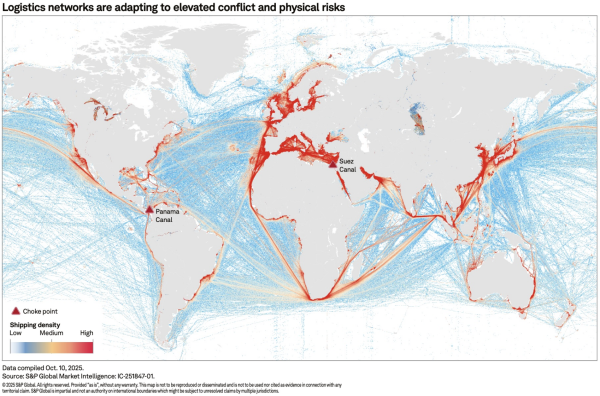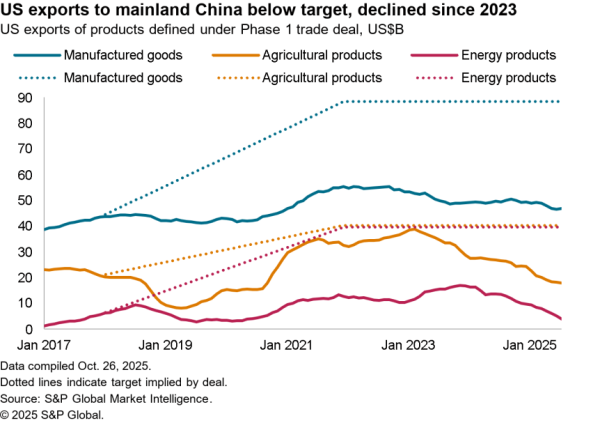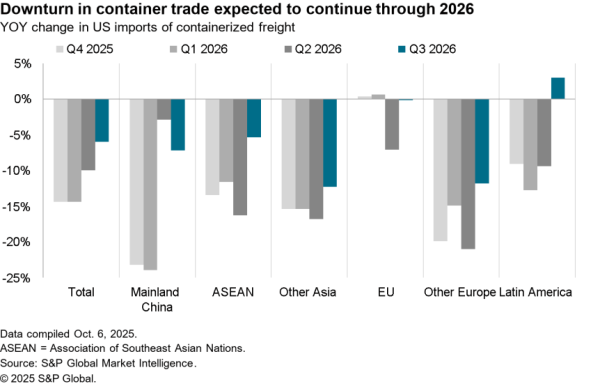The U.S. and Chinese government have reached an outline “phase 1” trade deal. According to the U.S. Trade Representative this will include commitments from China regarding intellectual property rights, technology transfer rules, food and agricultural standard, financial services market access, currency controls and “substantial additional purchases” of US goods and services.
The expansion will be equivalent to $200 billion of imports in 2020-21 above the level of 2017 for the “manufactured goods, food, agricultural and seafood products, energy products, and services” covered by the deal.
On the U.S. side there’ll be bilateral enforcement mechanisms for the new deal, combined with a trimming of tariffs on Chinese imports under the section 301 program. The tariffs on list 4A products will be halved to 7.5% from the 15% rate applied in September. Those covered $124 billion of imports in the 12 months to Oct. 31, Panjiva’s analysis shows.
Duties of 25% will be retailed on list 1 to 3 products which were worth $216 billion in the 12 months to Oct. 31. The latter is lower than the $250 billion in USTR’s announcement which was based on pre-tariff import levels.
Statements from China’s Ministry of Commerce is the same in outline, providing for nine chapters in the agreement including “bilateral assessments and dispute settlement“. Notably there is a broad-brush reference to “expanded trade” with no other details.
The next stage will be a legal review and proof-reading that will be completed “as soon as possible” alongside arrangements for signing the deal.
While an encouraging start, it’s worth noting, as outlined in Panjiva’s research of Dec. 13, that a prior version of the deal essentially failed during the translation and “legal scrub” process. The phase 1 deal may only be the end of the “third season” of the ongoing trade war between the U.S. and China that arguably started in Aug. 2017.
The impact of the deal on list 4A imports is likely to be minimal. While there was a 29.7% year over year drop in imports in October, the seasonal peak for imports of the products already passed in November.
Furthermore imports at the start of the year were already down suggesting demand for the consumer goods covered by the deal – including electronics and apparel – was already weaker.

Source: Panjiva
The imposition of list 4A duties from September has likely meant it was too early for most companies to have made significant, long-term changes to their supply chains. It’s also worth noting that the significant year over year drop is likely down to a higher-than-normal comparable figure a year earlier relating to earlier concerns that list 4 tariffs would be applied in December 2018. Furthermore, the potential for a “snap back” in tariffs may lead to continued uncertainty over supply chain planning.
The largest drop in imports of list 4A products in absolute terms were in televisions where total imports dropped by 67.8% year over year. There was a cut in seaborne shipments by TPV and TCL among others, Panjiva’s data shows.
Only part of the difference was covered by a surge in imports from Mexico which climbed by 52.4% in October after a 24.3% expansion in September. Total imports by sea and from Mexico still fell by 27.0% year over year in October.
At the consignee level that growth was led by Samsung and LG with increases of 57.3% and 69.2% year over year respectively in October. Shipments by Sony saw a more moderate growth of 6.0% in October.

Source: Panjiva




